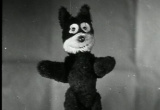What is Experimental Film?
As a genre, experimental film is a niche. These films by definition are unconventional, and therefore almost never reach a wide audience. But it is nonetheless an essential niche: experimental films have always formed the vanguard that goes on to determine the mainstream.
No formal characteristics
Many experimental films use the physical properties of the medium: photosensitivity, grain, color saturation - but this often manifests itself in very different ways. In the reference books about film history, the genre of experimental film often gets a rather cursory treatment. This is in part due to its very diverse scope; it is not a genre that can easily be described in terms of its formal characteristics. Likewise, experimental films are sometimes made in disciplines outside of film, such as science, visual art, or music. When interpreting these films, the usual film-theoretical framework comes up short.
Gallery or cinema?
Though internationally oriented, the experimental film scene is a traditionally closed community, one that has little connection to the rest of the Dutch film world. It is a subculture that largely takes place outside of the regular cinemas. These films are more likely to be screened in museums, galleries, cinema clubs, and special festivals, and it has its own distribution channels.
Heydays
Since the Second World War, there has really only been one period when experimental film became visible to a wider audience. That was at the end of the 1960s and the early 1970s, an era that was dominated by revolution, and a yearning for freedom and experimentation. In that period, experimental film briefly won a regular place in the Dutch film circuit.
This heyday is where the roots of experimental film’s traditions can be found: an international orientation and national activities; a formal approach and intuitive expression; the academy and the independent studio.
more information
If you are looking for more material from our collection, please contact Film Sales:
sales@eyefilm.nl
phone +31 (0)20 5891 426


